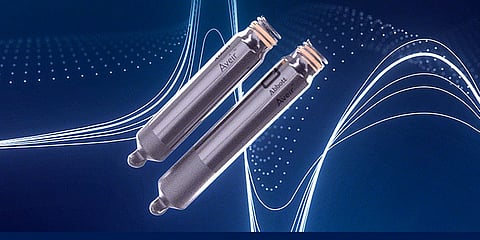

Abbott, the global healthcare company, has announced the launch of AVEIR™ dual chamber (DR) leadless pacemaker system - the first of its kind in the world. This tiny high-tech device helps the heart beat properly – without wires (leads) or surgical pockets used in traditional pacemakers.
Pacemakers help keep your heart beating at a healthy pace, especially if it’s beating too slowly — a condition called bradycardia. Traditional pacemakers use thin wires, called leads, to send electrical signals that control your heartbeat. These wires connect the device to your heart. In contrast, leadless pacemakers are a newer, more advanced option. They’re tiny devices placed directly inside the heart through a catheter inserted into a vein—no lead wires needed. This makes the procedure less invasive, lowers the risk of complications, and usually means a faster, easier recovery.
Until recently, leadless pacemakers could only support one chamber of the heart, because getting two separate devices to work together in sync was a major challenge. Abbott has changed that with its breakthrough implant-to-implant (i2i) technology. This innovation allows two tiny leadless pacemakers—one in the upper chamber (right atrium) and one in the lower chamber (right ventricle)—to communicate with each other in real time, beat by beat. For the first time, patients can benefit from true dual chamber leadless pacing, helping the heart beat more normally and synchronously—without the need for wires.
Research says that nearly 1 in 3 of the people who receive a pacemaker in India need a dual option to pace both chambers of the heart. “As leadless pacing technology has evolved, we’ve built upon our AVEIR VR single-chamber platform to expand the benefits of leadless pacing to far more people and provide additional treatment options to patients,” said Ajay Singh Chauhan, General Manager for Abbott’s cardiac rhythm management business in India, Southeast Asia, HK, Taiwan & Korea. “This tiny device packed with powerful technology is designed to treat abnormal heart rhythms more precisely and effectively.”
The AVEIR DR leadless pacemaker system includes two tiny devices - AVEIR VR, which helps control the heartbeat in the lower chamber (right ventricle), and AVEIR AR, which supports the upper chamber (right atrium). Each of the two leadless pacemakers is roughly about one-tenth the size of a traditional pacemaker. Once implanted and paired, these devices communicate with each other on every heartbeat with the i2i technology. This tech utilizes high-frequency pulses to relay messages through the naturally conductive characteristics of the body’s blood between each leadless pacemaker. This method uses far less battery power than inductive, radio frequency or Bluetooth® communication which are other alternatives used in implantable medical devices or traditional pacemakers.
Shorter, smaller and slimmer than an AAA battery each AVEIR pacemaker is implanted in a minimally invasive way. The device attaches to the heart’s interior surface with a screw-in mechanism – known as a fixation helix – that allows for future retrieval of the device should therapy needs evolve, or if the device needs to be replaced in the future. The AVEIR DR system is also designed to provide real-time pacing analysis, so physicians can assess proper placement of the device during the procedure and importantly before fixation.
Abbott’s AVEIR DR has received FDA approval in June 2023 as the world’s first dual chamber leadless pacemaker system. Abbott released data in May 2023 on the AVEIR DR i2i Investigational Device Exemption (IDE) study, published in The New England Journal of Medicine which demonstrated it is safe and effective for people who experience abnormal heart rhythms. The study met all its prespecified endpoints and showed that physicians demonstrated a 98.3% implant success rate. Safety endpoint evaluating freedom from device or procedure complications was achieved. More than 97% people achieved successful atrio-ventricular (AV) synchrony, so that the upper and lower heart chambers were beating normally, despite different types of underlying slow heart rhythms. The study also demonstrated that the system will function appropriately during different everyday life activities.